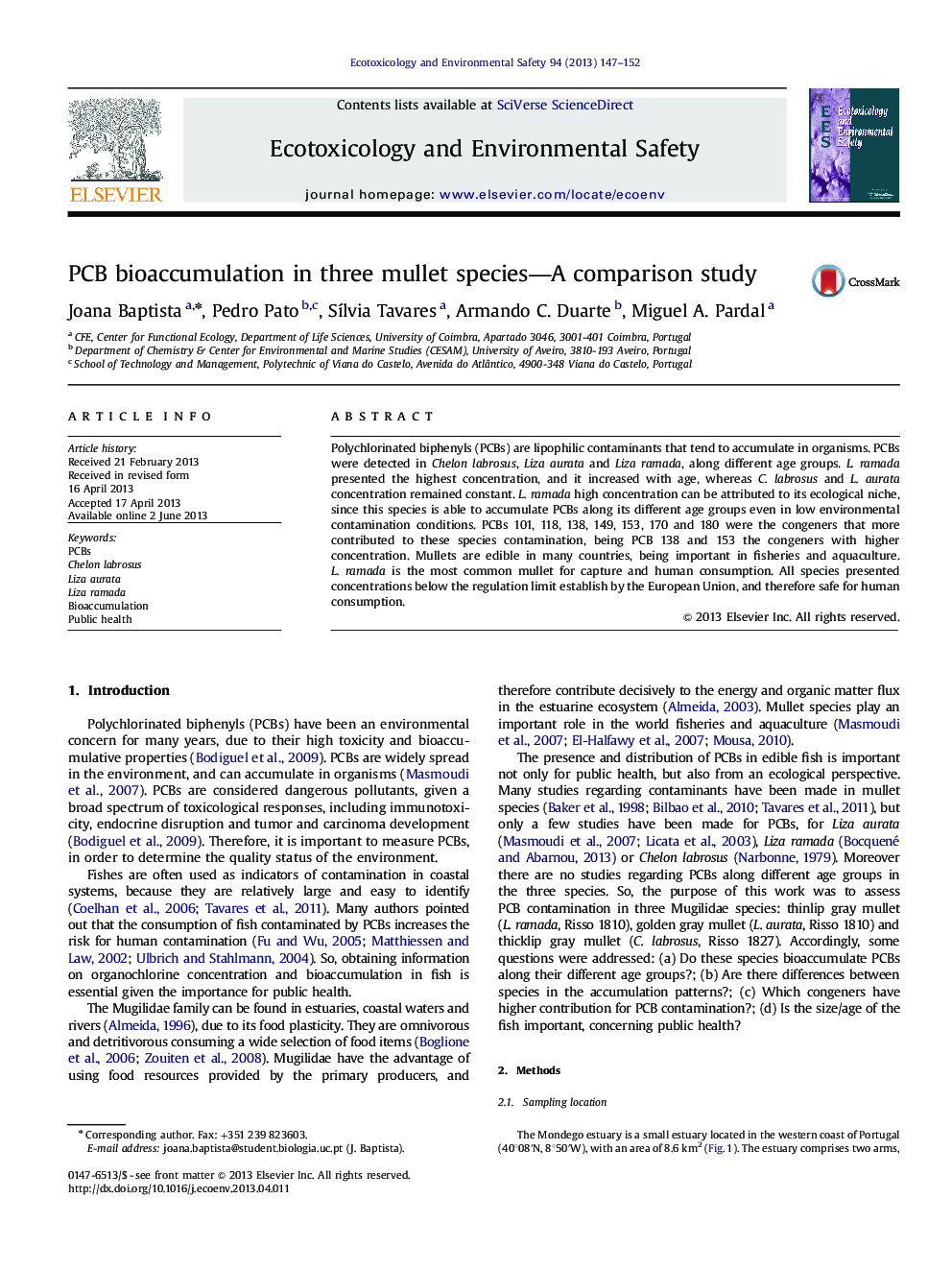| کد مقاله | کد نشریه | سال انتشار | مقاله انگلیسی | نسخه تمام متن |
|---|---|---|---|---|
| 4420496 | 1618969 | 2013 | 6 صفحه PDF | دانلود رایگان |

• PCBs were detected in L. aurata, L. ramada and C. labrosus along their lifespan.
• L. ramada increased its PCBs concentrations with age and had the highest concentrations.
• The congeners with higher concentration were PCB 138 and 153.
• All PCBs detected were below the European tolerance limit.
Polychlorinated biphenyls (PCBs) are lipophilic contaminants that tend to accumulate in organisms. PCBs were detected in Chelon labrosus, Liza aurata and Liza ramada, along different age groups. L. ramada presented the highest concentration, and it increased with age, whereas C. labrosus and L. aurata concentration remained constant. L. ramada high concentration can be attributed to its ecological niche, since this species is able to accumulate PCBs along its different age groups even in low environmental contamination conditions. PCBs 101, 118, 138, 149, 153, 170 and 180 were the congeners that more contributed to these species contamination, being PCB 138 and 153 the congeners with higher concentration. Mullets are edible in many countries, being important in fisheries and aquaculture. L. ramada is the most common mullet for capture and human consumption. All species presented concentrations below the regulation limit establish by the European Union, and therefore safe for human consumption.
Journal: Ecotoxicology and Environmental Safety - Volume 94, 1 August 2013, Pages 147–152